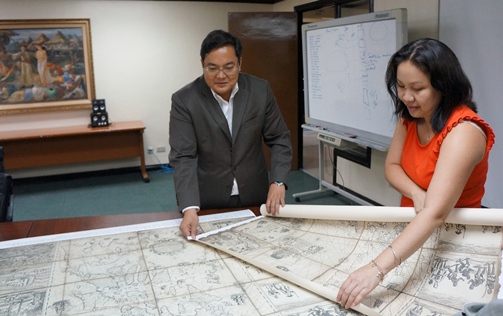WHY did it take Armed Forces Chief of Staff Emmanuel Bautista almost a month to tell the President and the Department of Foreign Affairs about the Chinese Coast Guards using water cannons against Filipino fishermen in Bajo de Masinloc?
The incident was reported when Bautista told Monday the foreign correspondents in the Philippines about the incident: “Chinese Coast Guard tried to drive away Filipino fishing vessels to the extent of using water cannon.”
Asked if the Philippines would lodge a protest over the incident, Bautista said they would first have to investigate.
What? Twenty-eight days have passed and the government is still investigating?
Is this Bautista’s idea of making sure that the military perform its mandate “as protectors of the people and the state and of our national territory?”
Following Bautista’s revelation, the Department of Foreign Affairs scrambled to join the act and summoned the Chinese Embassy charge d’affaires to convey the country’s strong protest over the incident.
Why only now?
Hernandez said they were informed about it only “late last week.”
He said they “needed to collect more details and information before making any the decision on what course of action we need to undertake on this issue.”
He added that the incident has been confirmed although they don’t have any documentary evidence. The report they got, he said, was that no one was injured.
Coast Guard sources said there were actually 14 fishing vessels by Filipino fishermen in Bajo de Masinloc on that day and only two were subjected to water cannon spraying. The source said the two vessels must have gone too close to the Chinese Coast Guard ship and the spraying was a warning act.
 Bajo de Masinloc, a triangular-shaped coral reef formation that has several rocks encircling a lagoon, is both claimed by the Philippines and China. Also known as Panatag Shoal and Scarborough shoal, it is 124 nautical miles from Zambales (not located in West Philippine Sea.)
Bajo de Masinloc, a triangular-shaped coral reef formation that has several rocks encircling a lagoon, is both claimed by the Philippines and China. Also known as Panatag Shoal and Scarborough shoal, it is 124 nautical miles from Zambales (not located in West Philippine Sea.)
Calling it Huangyan Island, China has included the rock formation, which is 467 nautical miles from the mainland, in its 9-dash line map.
After a 57-day standoff precipitated by the arrest by the Philippine Navy of Chinese fishing vessels on April 8, 2012, there’s an understanding of peaceful co-existence in the area.
That’s why President Aquino was uncharacteristically a voice of moderation in this incident. Talking to reporters in Cebu, where the 1986 Edsa People Power was commemorated, Aquino noticed inconsistencies in Bautista’s revelation because at the very time the Armed Forces chief was telling the foreign correspondents about the Jan. 27 incident, Filipino fishermen were fishing inside the shoal.
Aquino said: “May I add na medyo inconsistent rin yung nangyari dyan. We’re not sure at this point in time if we can call it their standard operating procedure. Kasi as of yesterday, we had fishermen inside the shoal, inside the shoal who are not being harassed or intimidated by any entity. So ayaw naman natin mag-react kung one of incident ‘to that they probably will say was acting not under their orders but out of ‘yung para bang dinesisyunan ng kapitan ng particular boat na ‘yun.”
The President further said that “The first step will be a diplomatic message directed at the People’s Republic of China to ask them to explain what this incident was all about and what their directions are.”
In the note verbale handed to the Chinese Embassy charge d’affaires, the DFA reiterated that “Bajo de Masinloc is an integral part of the Philippines and over which the Philippines exercises sovereignty, sovereign rights and jurisdiction. Philippine fishing vessels have been routinely, continuously, and peacefully and sustainably fishing in Bajo de Masinloc.
China’s replied: “The Chinese side does not accept the so-called “protest” by the Philippine side.”
They also reiterated thay “China has indisputable sovereignty over South China Sea Islands and their adjacent waters, Huangyan Island included. Chinese government vessels are conducting regular patrols within China’s jurisdiction. “
China added: “We urge the Philippine side to work with the Chinese side to resolve differences through bilateral consultations and negotiations.”
Feeling disadvantaged in a one-on-one negotiation with the behemoth neighbor, the Philippines brought the territorial dispute to the United Nations Arbitral Court.






